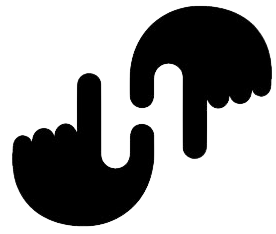What are the body segments of chelicerates?
Chelicerates have bodies divided into two segments, the prosoma and the opisthosoma. The promosa is the front part of the body and it has six pairs of appendages including four pairs of walking legs, a pair of jointed jaws called chelicerae, and a pair of antenna-like pedipalps.
Do chelicerates have 2 body segments?
Chelicerates have two body segments; a cephalothorax and an abdomen. They have no antennae, but have six pairs of appendages. The most anterior appendages are called the chelicerae and are normally modified into pincers or fangs.
How many body parts do chelicerates have?
Fundamentally, all chelicerates are divided into two body regions, the anterior prosoma (the region that bears the eyes, brain, mouthparts, and walking legs) and the posterior opisthosoma (the region that bears respiratory and reproductive organs).
What are the three classes of chelicerates?
There are three classes of chelicerates (Merostomata, Arachnida, and Pycnogoida).
How many chelicerates are in below zero?
four Chelicerates
The Chelicerate (pronounced “keh-li-ser-ate”) is an aggressive leviathan class fauna species of Subnautica: Below Zero. There are a total of four Chelicerates within Sector Zero on Planet 4546B and three Void Chelicerates within the edges of the sector.
Where are chelicerates found?
They are largely terrestrial arthropods, living beneath stones and logs, in leaf mold, and in vegetation, but there are some aquatic mites that live in fresh water and in the sea.
What are the chelicerates named after?
The chelicerates are arthropods that are named for their feeding appendages called chelicerae. The chelicerae are specialized pair of appendages that appear before the mouth. These appendages have become a part of the mouth and in spiders, the chelicerae form fangs.
Do chelicerates Respawn?
The standard Chelicerate will not respawn if killed unless a major update happens to the game.
Is the Chelicerate a leviathan?
The Chelicerate is a highly aggressive leviathan that will attack you and your Seatruck if you get too close. It looks a bit like a cross between a shrimp and a shark. The Chelicerate lives in the Purple Vents and can be found near the Mercury II wreck as well as near Adult Vent Gardens.
What is the most powerful leviathan in Subnautica: Below Zero?
Although not a direct threat in the game (yet), the Frozen Leviathan is the biggest predator based Leviathan class creature that you will likely come across in Subnautica: Below Zero. And it would no doubt have posed quite the threat were not for the fact that it’s dead and frozen in ice.
Are crabs chelicerates?
Barnacles, shrimps, crabs, lobsters, wood lice, and crayfish are crustaceans, while horseshoe crabs, spiders, and scorpions are chelicerates. All of them, together with insects, centipedes and millipedes, belong to the arthropods which represent the vast majority of the animal world and have rich fossil records.
What do the setae of an earthworm look like?
Except for the first and last segment, all the other segments have eight setae located around each segment. The setae look like small bristles sticking out of the earthworm’s skin. The setae can be retracted and are for moving through the soil.
Where are the genital pores located in an earthworm?
The female genital pore is situated at the 14th segment and a pair of male genital pores is situated at the 18th segment. The body consists of S-shaped setae, which help in locomotion in the earthworm. Setae are present in each segment except in the first, last and clitellum segments.
How does an earthworm get into its body?
The earthworm breathes through its thin skin. earthworm’s body, and then passes into the body. When long muscles tighten—or contract— the segment is squeezed so it gets shorter. The liquid in the segment presses outward, making the segment fatter.
What kind of reproductive system does an earthworm have?
The male reproductive system consists of two pairs of testes (10-11 segments), vasa deferentia (till 18 th segment), and two pairs of accessory glands (17 th and 19 th segments). The prostate and spermatic ducts open by a pair of male genital pores (18 th segment). The spermatozoa are stored in the four pairs of spermathecae (6-9 segments).
